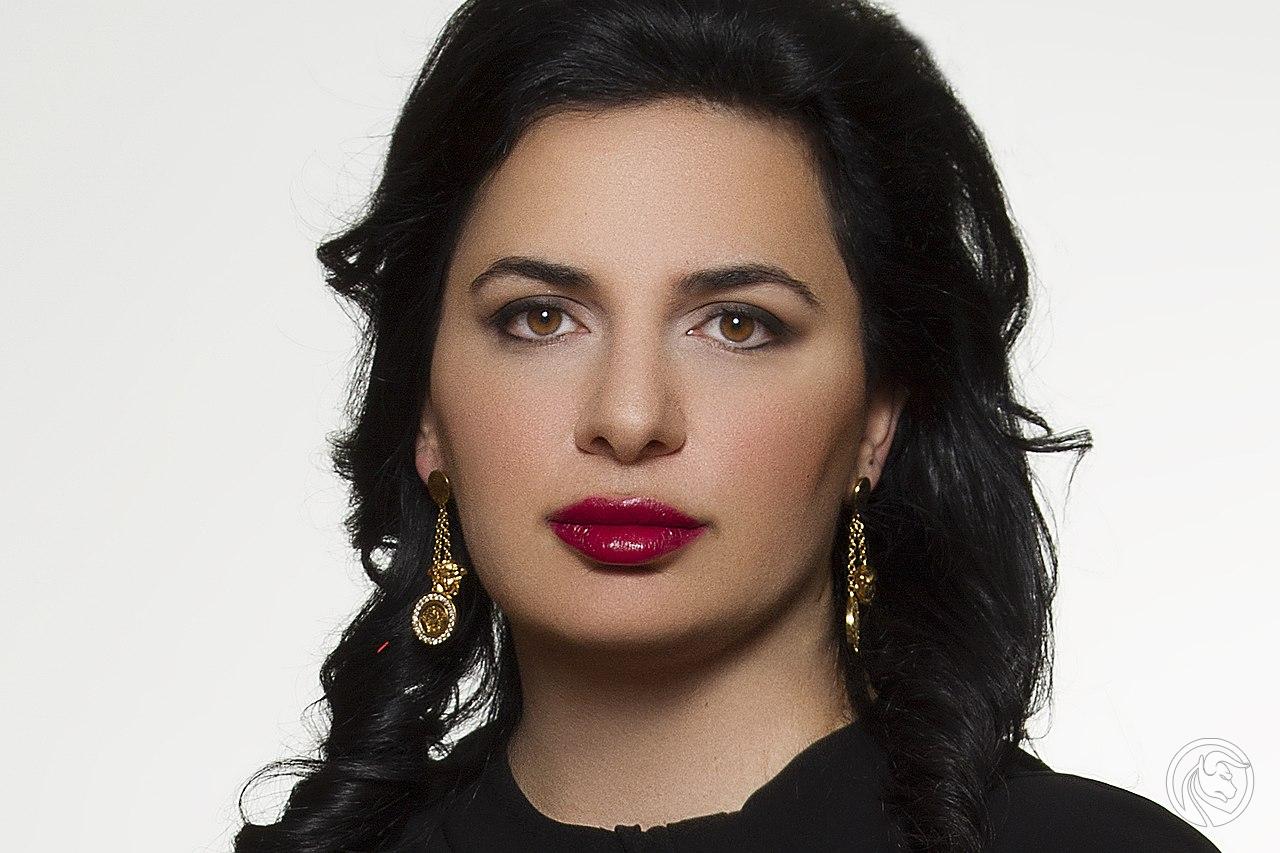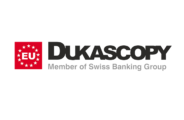CryptoQueen Ruja Ignatova – The story of one of the biggest crypto scams
The world of cryptocurrencies is not understandable to the average person. Terms like blockchain, PoW, PoS, halving are completely incomprehensible to many. Of course, the level of awareness in society is already greater than in previous years. It is still low though. At the same time, historical returns have captured the imagination of many investors. This resulted in the perfect mix for all kinds of cheaters. This mixture is greed and ignorance. A great example is Ruja Ignatova and the history of her "achievements" on this market. Thanks to her achievements, she was hailed by some as Crypto Queen. Very quickly, she created a financial pyramid that led to extortion $ 4 billion from unsuspecting investors.
Who is Ruja Ignatova?

Ruja Ignatova, CryptoQueen. Source: wikipedia.org
The heroine of today's article was born in 1980, in the Bulgarian city of Rusa. The city is located on the border with Romania. The difficult economic situation prompted my parents to move to Germany in 1990. Young Ruja Ignatova lives in Schramberg in Baden-Wittenberg. She herself mentioned that she graduated from Oxford, but there are no details about the completed majors and the date of matriculation. In 2005, she obtained a PhD in international law at the University of Konstanz. She then joined McKinsey & Company. After working in a corporation, she decided to launch a project that was supposed to change the world cryptocurrency. The experience and education gained calmed investors' vigilance. After all, the doctor and former employee of McKinsey & Company could not be frauds. Nothing could be more wrong.
OneCoin - the successor to Bitcoin
Every pyramid scheme must have a story that is at least partly understandable by the victim investors. In case of Ponzi Scheme these were investments in IRC stamps. In turn, Amber Gold was to ensure profits by investing in gold. The CryptoQueen scam was no different.
How did Ruja Ignatova's project convince so many people to entrust their funds to them? The story that excited investors was replacement Bitcoin in place of the most valuable cryptocurrency. Investors who invested in this financial pyramid wanted to be the beneficiaries of the significant increase in the value of the OneCoin cryptocurrency. OneCoin itself was created in late 2014. According to the assumptions, it was not a decentralized cryptocurrency, but a centralized one that was hosted on servers belonging to OneCoin Ltd.
Between August 2014 and March 2017, investors from all over the world invested in OneCoin. The sum of capital invested in this project exceeded $4 billion. OneCoin has gained particular popularity in Asia. Chinese citizens invested the most capital in 2016. In the first half of 2016 alone, they allocated over $400 million for this purpose.
In June 2016, Ruja Ignatova was the main face of the OneCoin promotion at Wembley Stadium. There she mentioned that her cryptocurrency would be soon "the biggest in the world". What's more, thanks to OneCoin, anyone will be able to make payments anywhere in the world. Additionally, CryptoQueen mentioned that OneCoin will:
"In two years, no one will be talking about Bitcoin."
It fired the imagination. Suffice it to say that back then Bitcoin had a great history of rising in price from a few cents to hundreds of dollars. Many investors believed that a cryptocurrency could be created that would repeat the success of Bitcoin.
OneCoin – sales and trading mechanism
Many investors did not want to miss another great investment opportunity. They read stories of ordinary people who bought Bitcoin "for pennies" as a joke and became millionaires. It fired the imagination. At the same time, the OneCoin marketing envelope was very well thought out. A huge show made during meetings with investors allowed to convince even skeptical investors.
In addition, there were special groups on Whatsapp that refuted the allegations of "haters" who did not believe in the OneCoin project. The most critical members of the groups were very often removed from them. After some time, these groups became a circle of mutual admiration. In such groups, "convincing the convinced" took place. Members of such groups believed that OneCoin's problems were related to the conspiracy of the financial world, which is afraid of the OneCoin revolution.
The company also offered training materials to educate investors in the field of investing in cryptocurrencies. The materials concerned both the information on the world of cryptocurrencies and investment strategies. Package prices varied greatly. From €100 to even €100. As it turned out later, the materials did not contain any secret knowledge and were created based on free materials available on the Internet.
OneCoin's sales activity contained an element multi-level marketing (MLM). Each user of the materials who convinced another person to buy them received prizes. Material buyers also received tokens to be used to mine OneCoin.
The company was trying to win customers in poorer countries. This resulted from two reasons: weaker authorities supervising the financial market and a very low level of financial knowledge of "clients". There, she also tried to create an MLM structure that was supposed to speed up the sale of training packages.
The OneCoin cryptocurrency could be exchanged for the euro it was held on "virtual wallet". On the only place of trading - OneCoin Exchange - there were sales limits that depended on what educational material the investor had previously purchased. The OneCoin cryptocurrency could be exchanged for euros, which was held in a "virtual wallet". OneCoin trading on other platforms was impossible.
Red flags
Even though OneCoin was selling the idea of a revolution in cryptocurrencies, there were many red flags related to the technological aspect. She was one of them an attempt to attract Bjorn Bjercke, who was an expert on blockchain, to the project. According to a BBC investigation, OneCoin offered a salary of £250 plus flat and car rental. Bjorn's task was to build a blockchain in OneCoin. However, the expert decided not to take the job. So OneCoin was cryptocurrency not based on blockchain and needed "face"which was intended to validate the activity "cryptocurrencies".
One of the objections that an investor could have towards OneCoin was the inability to invest in centralized ones cryptocurrency exchanges. The cryptocurrency was not available on public exchanges such as Coinbase or Binance. Instead of this the only place where it could be traded was the internal OneCoin Exchange (xcoinx). The right to trade on the stock exchange had people who bought more advanced educational packages. So it was a classic example of a strange cryptocurrency popularization policy. OneCoin wanted to create a "closed" world to discourage investors from withdrawing funds from its ecosystem. As it turned out later, the goal was to bring about the collapse of the financial pyramid as late as possible.

The Davin's yacht
There is always a red flag if the cryptocurrency creator is active on social media focuses on showing off wealth. This was the case with Ruja Ignatova. The OneCoin face itself spent a fortune to maintain its status as a successful man. She bought, among others property in Sofia for several million dollars. In addition, she purchased the luxury yacht The Davina.
At the same time, the organizational structure of OneCoin itself was very complicated. According to an investigation organized and described by the BBC, there was a whole "chain" of companies linked to each other and registered, among others, in in Panama. For example, the property in Sofia was purchased not by Ruja Ivanova but by One Property. This company was owned by Risk Ltd. This company was in turn managed by Peragon, which belonged to Artefix. Ultimately, the owner of Artefix was CryptoQueen's mom.
CryptoQueen in 2016 -2017: more and more problems
The problem, however, was that OneCoin's activity was not generating any value. She was just a relay between payers and payers. This situation could not last forever. Someone had to say "check" after all. The problems concerned both technology and problems with maintaining the stability of the financial pyramid. What's more, the sale was hindered by regulators who began to warn against OneCoin.
On March 1, 2016, without prior warning, OneCoin announced that the exchange would be closed for two weeks. The reason was supposed to be a large number of "miners", which was supposed to result in the need for better integration with the blockchain. After two weeks, on March 15, the exchange returned to activity. In January 2017, the exchange stopped working again.
A strange business model meant that the company's activities attracted more and more attention from financial market regulators. One of the first regulators to define OneCoin as a pyramid scheme was the Hungarian Central Bank. It took place in December 2016.
In February 2016, the Daily Mirror newspaper warned its readers that OneCoin is a scam that seeks to attract new customers on dreams of getting rich quickly. According to the author, the cryptocurrency was "worthless". The atmosphere around OneCoin was getting thicker all the time, which scared off customers. Dr. Ruja Ivanova continued to look for new clients to maintain the pyramid. OneCoin's valuation was artificially held high to attract new "investors".
In 2016, the company was placed on the watch list of many regulators. Among them were e.g. Bulgaria, Finland, Sweden, Norway and Latvia. What's more, the Norwegian Direct Selling Association also warned against the project. At the end of 2016, the Italian regulator Autorità Garante della Concorrenza e del Mercato launched an investigation into unfair promotional practices of the OneCoin cryptocurrency. In February 2017, OneCoin was banned.
Interestingly, OneCoin has been publicly caught cheating. In 2017, the company announced that it had received a license from the Vietnamese regulator for cryptocurrency activities. However, very quickly, the Vietnamese government announced that it had not granted any license to OneCoin. It turned out that OneCoin used a forged document. Further the forgery was inept because the document was "signed" by an official who, on the date of issue of the document, was not authorized to issue and sign such a document.
In March 2017, another warning appeared. The Central Bank of Croatia has warned citizens that OneCoin is not regulated by the regulator. As a result, he advised against investing in the aforementioned cryptocurrency project.
Such an environment meant that there were fewer and fewer people willing to "invest" in OneCoin. What's worse, even members of WhatsApp groups were losing faith. Since "the most faithful of the faithful" they were selling tokens, there was no chance for OneCoin to work longer.
Dr. Ruja Ivanova did not attend the conference in Lisbon, which took place in October 2017. She was also not at the headquarters in Sofia, Bulgaria. She literally fell to the ground. There were rumors that she had been killed or kidnapped by jealous banks. The assassination was supposed to save the banking system from collapsing for a reason "cryptocurrency revolution". The last trace left by Ruja was the flight from Sofia to Athens, which took place on October 25, 2017. Customers were left without funds. As a result, several billion dollars "evaporated". Profits turned out to be only on paper, and he will accept everything. The search for the culprits has begun.
Ruja Ignatova is still at large

Konstantin Ignatov. Source: financialfraudsternews
The escape of Ruja Ignatova did not mean the end of the investigation. Over the next years, people involved in money laundering and pyramid schemes were prosecuted by the authorities of many countries.
Between January 17 and 18, 2018, Bulgarian police searched OneCoin offices in Sofia in response to the order of the German prosecutor's office in Bielefeld. During the investigation, units of the German police and Europol helped. However, the main people involved in the creation of the financial pyramid have not been caught.
After a few years, there were more successes. In 2019, CryptoQueen's brother - Konstantin Ignatov - was captured and charged with fraud, money laundering. It is worth mentioning that the US Department of Justice determined that Konstantin Ignatov had ties to criminal organizations from Eastern Europe.
In the same year, the New York Federal Court charged another person. It was lawyer Mark Scott. The allegations concerned money laundering and bank fraud.
Less than three years later, in January 2022, the police searched apartments and offices related to Ruja Ignatova and the OneCoin project in Weiburg, Baden-Baden, Frankfurt am Main and Vaihingen.
In May 2022, Europol added CryptoQueen to the list of most wanted criminals. A month later, the FBI added her to the FBI Ten Most Wanted Fugitives list. To this day, Ruja Ignatova remains elusive.






















![Forex Club – Tax 9 – Settle tax on a foreign broker [Download the Application] Forex Club - Tax 9](https://forexclub.pl/wp-content/uploads/2024/02/Forex-Club-Podatek-9-184x120.jpg?v=1709046278)
![Trading View platform – solutions tailored to the needs of traders [Review] trading view review](https://forexclub.pl/wp-content/uploads/2024/03/trading-view-recenzja-184x120.jpg?v=1709558918)
![How to connect your FP Markets account to the Trading View platform [Guide] fp markets trading view](https://forexclub.pl/wp-content/uploads/2024/02/fp-markets-trading-view-184x120.jpg?v=1708677291)
![How to invest in ChatGPT and AI? Stocks and ETFs [Guide] how to invest in chatgpt and artificial intelligence](https://forexclub.pl/wp-content/uploads/2023/02/jak-inwestowac-w-chatgpt-i-sztuczna-inteligencje-184x120.jpg?v=1676364263)




![Izabela Górecka – “Success on the market depends not only on knowledge, but also on emotional stability” [Interview] Izabela Górecka - interview](https://forexclub.pl/wp-content/uploads/2024/04/Izabela-Gorecka-wywiad-184x120.jpg?v=1713870578)
![WeWork – the anatomy of the collapse of a company valued at $47 billion [WeWork, part II] wework bankruptcy story](https://forexclub.pl/wp-content/uploads/2024/04/wework-bankructwo-historia-184x120.jpg?v=1711729561)
![Adam Neumann – the man who screwed up Softbank [WeWork, part AND] adam neumann wework](https://forexclub.pl/wp-content/uploads/2024/04/adam-neumann-wework-184x120.jpg?v=1711728724)




![The most common mistakes of a beginner trader - Mr Yogi [VIDEO] Scalping - The most common mistakes of a beginner trader - VIDEO](https://forexclub.pl/wp-content/uploads/2024/03/Scalping-Najczestsze-bledy-poczatkujacego-tradera-VIDEO-184x120.jpg?v=1711601376)
![Learning patience: No position is also a position - Mr Yogi [VIDEO] Scalping - Learning patience - No position is also a position - VIDEO](https://forexclub.pl/wp-content/uploads/2024/03/Scalping-Nauka-cierpliwosci-Brak-pozycji-to-tez-pozycja-VIDEO-184x120.jpg?v=1710999249)
![When to exit a position and how to minimize losses - Mr Yogi [VIDEO] Scalping - When to exit a position and how to minimize losses - VIDEO](https://forexclub.pl/wp-content/uploads/2024/03/Scalping-Kiedy-wyjsc-z-pozycji-i-jak-minimalizowac-straty-VIDEO-184x120.jpg?v=1710336731)




![Forex Club – Tax 9 – Settle tax on a foreign broker [Download the Application] Forex Club - Tax 9](https://forexclub.pl/wp-content/uploads/2024/02/Forex-Club-Podatek-9-300x200.jpg?v=1709046278)
![How to invest in ChatGPT and AI? Stocks and ETFs [Guide] how to invest in chatgpt and artificial intelligence](https://forexclub.pl/wp-content/uploads/2023/02/jak-inwestowac-w-chatgpt-i-sztuczna-inteligencje-300x200.jpg?v=1676364263)












Leave a Response